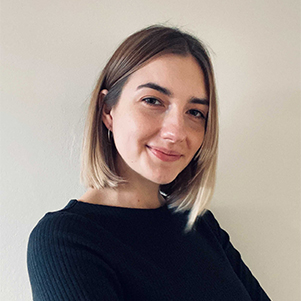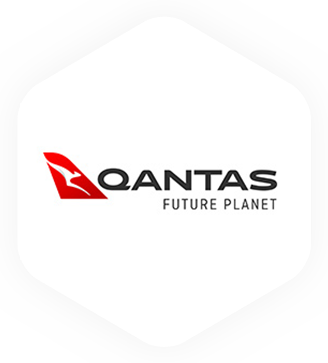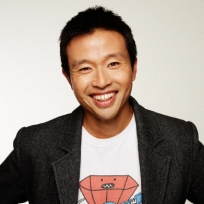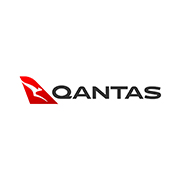Sorry! Registrations for this project has now closed.
But don’t worry, similar projects are coming soon, so leave your email address to be the first to know.
- Project starts5 June 2019
- PrerequisitesNone
- Places remaining0
- Project Duration9 weeks
- Course Price $2900
The Brief
Qantas’ Future Planet program is a sustainability initiative that aims to offset carbon emissions generated by air travel. Since 2007, Qantas Future Planet – with the help of its partners and the public – have offset over 3 million tonnes of carbon emissions, making Qantas the largest offsetter of any airline.
Objectives
- Research and define the user needs for the audience segment most inclined to use the carbon offset calculator
- Provide a revised UX design for the landing page and calculator that aims to enhance the overall usability of the calculator
- Provide an additional ‘blue sky’ recommendation for enhancing carbon offsetting for Qantas to consider in their future road map
Your mentor will guide you every step of the way!

Meet Your Mentor
Meet Your Mentor
Ken has over 17 years experience in UX design, most of which has focused on mobile strategy and design. As Head of UX at Fairfax Media, Ken received multiple Australian Mobile awards for his user centred, mobile led contribution to iconic Australian brands such as the Sydney Morning Herald (SMH),
Ken has over 17 years experience in UX design, most of which has focused on mobile strategy and design. As Head of UX at Fairfax Media, Ken received multiple Australian Mobile awards for his user centred, mobile led contribution to iconic Australian brands such as the Sydney Morning Herald (SMH), Domain, Good Food Guide and Realestate.com.au. Throughout his tenure, Ken’s leadership saw Fairfax double its UX capability and he was instrumental in the launch of key flagship products including the Domain mobile app, which many of us use every day.
Ken has a passion for tackling complex design challenges and turning these into experiences that feel second nature to consumers and it’s this drive that gets him out of bed every morning. This project is a unique opportunity to be mentored by one of Australia’s leading UX designers and we’re so excited to welcome Ken to the Harness Projects mentor team.
Where I’ve worked
- Senior UX Designer at Qantas
- Director & Founder of Red UX Agency
- Head of UX at Fairfax, SMH, Domain
- Acting Head of UX at Seek
Problem Statements & User Stories
A problem statement is a concise description of a problem or issue a project seeks to address. A user story is an informal, general explanation of a software feature written from the perspective of the end user.
How it will be practiced and demonstrated
You will learn how to develop problem statements and user stories in order to drive your design process forward from a user-centric perspective. This technique is a fundamental part of UX design and Product Management and is used extensively in related fields in agile approaches to work.
Requirements Gathering
Requirements gathering is the practice of interviewing key stakeholders of a project to understand what is required to be solved. This is an important skill for anyone working in the world of problem solving, which these days affects almost all career paths.
How it will be practiced and demonstrated
All of our projects include direct access to a company stakeholder who will form the client on your project. You will get an opportunity to learn how to capture business requirements from stakeholders through a live workshop and translate this into meaningful actions to drive your design, product or marketing process during your project.
Survey Design
At times we need to move to a more quantatitive approach to customer research. Designing surveys to effectively capture the correct insights is a very nuanced skill. It's important to be mindful of leading questions and the structure of your survey so your own biases do not pollute the responses, but instead provide a neutral canvas for your end-users to share their unique insights on a particular product, problem or service.
How it will be practiced and demonstrated
Students will have an opportunity to make use of effective survey design to gather insights into a target audience during the research phases of applicable projects.
User Interviews
A user interview is a research method during which a researcher asks one user questions about a topic of interest (e.g. use of a system, behaviors and habits) with the goal of learning about that topic. Interviews give insights into what users think about a site, an application, a product, or a process. They can point out what site content is memorable, what people feel is important on the site and what ideas for improvement they may have.
How it will be practiced and demonstrated
During applicable projects, students will need to conduct user interviews to learn about the target audience they are solving a problem for. We use a variety of methods to source candidates for your user interviews, some will be pre-arranged, some you will need to tap your network and we'll also use candidate sourcing platforms like Askable to find the perfect user to interview.
User Personas
Personas are a commonly used method of research synthesis used in UX Design, Product Management and at times in Digital Marketing (often called Brand Personas). At their core, persona's are about creating products with a specific, not generic, user in mind. Personas are archetypical users whose goals and characteristics represent the needs of a larger group of users
How it will be practiced and demonstrated
Students will be required to synthesise their research in applicable projects and develop User Personas that illustrate their target user. During your project(s) you will learn when personas are useful and when they are not.
User Journey Mapping
A user journey map is a visualization of an individual’s relationship with a product/brand over time and across different channels. While user journey maps come in all shapes and formats, commonly it’s represented as a timeline of all touch points between a user and a product. UX Designers, Product Managers and Digital Marketers alike make user of user journeys to better service their customers needs.
How it will be practiced and demonstrated
During the research synthesis phase of applicable projects, students will be required to create user journey maps that reflect the journey of their target audience in relation to their assigned project / product problem area.
Synthesis
Synthesis is an approach to converging information into a format that is meaningful and communicable. As a UX Designer your design is only as good as your ability to communicate why it is, the way it is. By practicing synthesis of research and translating this into specific UX presentation formats, you will start to build a story for your design. Perhaps one of the most important parts of being a great designer is your storytelling.
How it will be practiced and demonstrated
During your project, you will be required to synthesise your research findings using a variety of techniques that we will teach you. Your research synthesis will be critical to supporting your design proposal to your client.
Information Architecture
Information architecture is all about the organisation of information in a clear and logical way. Such organisation follows a clear purpose — helping users navigate complex sets of information. Time is the most precious resource people have. We live in a world where people expect to find a solution to their problems with the least amount of effort. When the process of finding information is too complicated or too slow, there’s a risk that people will simply abandon it. And when people abandon an app or a website, it’s more difficult to bring them back.
How it will be practiced and demonstrated
During applicable projects, students will apply best practice information architecture principles to ensure their designed solution solves a users task in an efficient and intuitive way.
Sketching
Sketching is recommended as a fast and light-touch method of getting your initial design ideas down on paper. It can be used as a feedback tool or simply to formulate your own thinking during your design process. You don't need to be an artist to sketch well, simply learning some of the basics can help to get your design started on the right foot.
How it will be practiced and demonstrated
During your project, you may be required to sketch out your design ideas before committing the extra effort to create a wireframe or prototype. Not just a UX Design step, this technique can be useful to learn for Product Managers and Digital Marketers alike.
Usability Testing
When we have access to an existing product, usability testing is a staple of the iterative design process. It enables UX Designers & Product Managers to learn what works and what doesn't from their product designs and is another effective method of customer research.
How it will be practiced and demonstrated
Students on our UX & Product Fundamentals projects as well as our Advanced Prototyping projects will get an opportunity to practice running usability testing sessions to get feedback from end-users and inform their final designed solution.
Wireframing
Wireframes are the blueprints of the final design presented to end users. We strip out a lot of the 'aesthetics' and focus primarily on the structure of pages / screens so we can get our information structured effectively and ultimately solve the initial user tasks that were identified earlier in the design process.
How it will be practiced and demonstrated
During your project, you will put together wireframes for your design solution using a leading UX tool called Figma. Our UX Design and Product Management students will get a chance to present their wireframed solution to represent the solution design they have created for their client.
Card Sorting
Understanding how to find taxonomies in the data you are sifting through will help the synthesis process and ultimately the design itself. Early in a project, designers can be flooded with information that can be overwhelming if not sifted through appropriately. Card sorting is a technique to find patterns and relationships in data to more easily digest what is being shared.
How it will be practiced and demonstrated
During the research phases of applicable projects, you will used card sorting to help refine the data you are gathering into taxonomies. In certain workshops, your mentor and fellow students will use a Miro board to sift through the groups research findings, just like a real UX team.
Prototyping
Prototyping is the stitching together of your wireframes into a format that can be interacted with. Typically used for usability testing, getting feedback from stakeholders or to simply to test out an interaction before investing more heavily in its development. You will get an opportunity to practice prototyping on our fundamentals and advanced usability & wireframing projects.
How it will be practiced and demonstrated
During your project, you will learn how to put together a prototype using a leading UX tool called Figma. Students in our fundamental projects will learn general interactions and linking. Advanced students will take things a step further, add advanced interaction functionality to their prototype and learn how to prepare hand-off documentation.
We've partnered with leading organisations in the UX industry to ensure you receive the most industry-relevant learning experience possible.
A Harness Project essentially allows you to jump straight into a real project with a real client to help solve a problem the company is facing. With a small group of 12 students and a mentor to guide you through each step of the way, you are left with real life experience by presenting a final solution to a problem and a portfolio piece that you are proud of!




